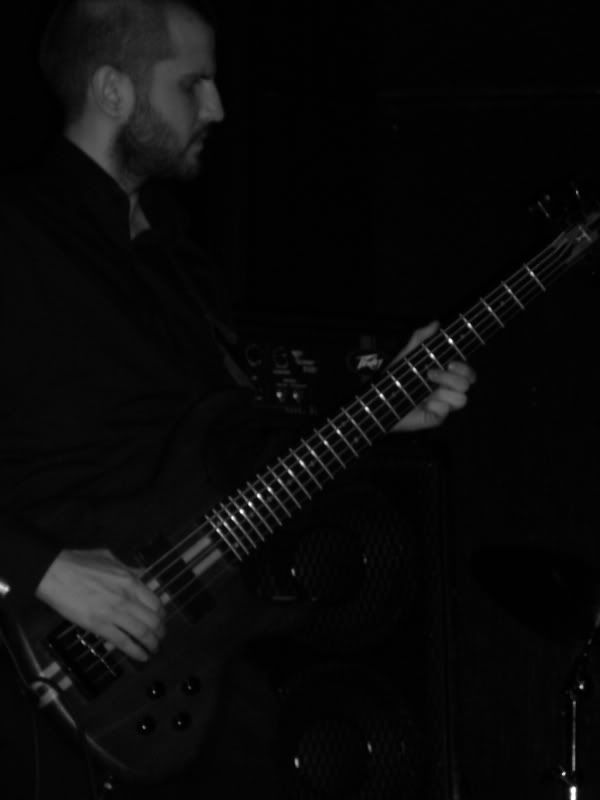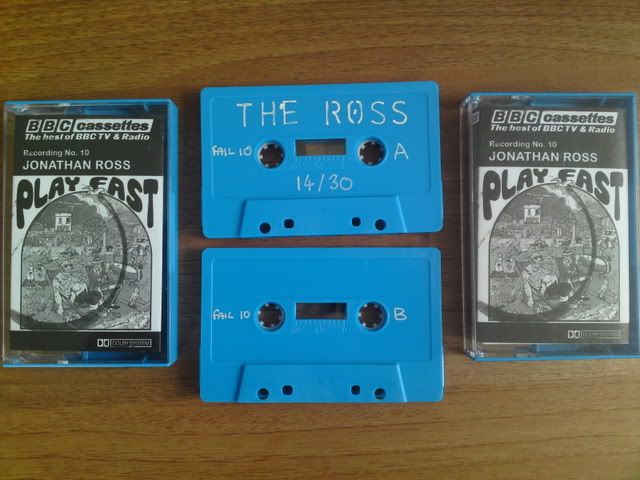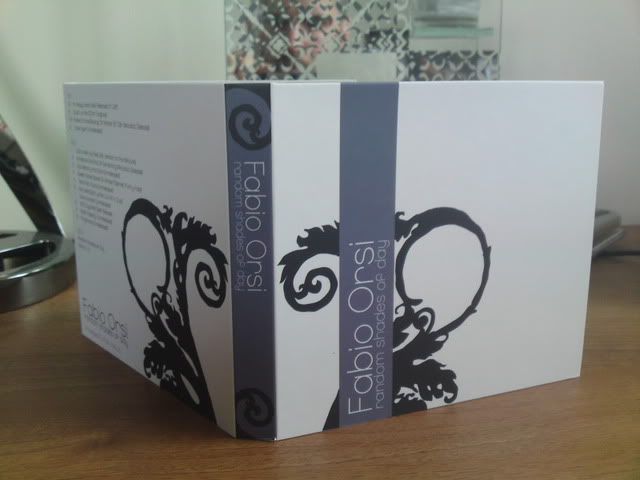If there’s anyone still alive who read the paper version of LON – hopefully you’ll recall the adventures of one Metal Bastard, the calamity-causing cannibalistic comic hero of chaos, who featured in various issues. Comic creator, Steven McCumaskey, created said Bastard and now runs his own comic imprint, Envision Comics, which is rather badass…
When did you first have the idea to start Envision?
Envision Comics began to take shape around 2005 – I’d previously sent art submissions to established comic book publishers in the hope of starting a career in the industry, but these proved to be unsuccessful. I’d always been creating my own comics from a young age and in truth, the creator-owned arena was where my heart lay. It occurred to me that instead of drawing from scripts that weren’t mine or writing for other artists, I could put all my efforts into creating and building something that was my own, as I was writing and drawing everything myself anyway. Once the seed had been planted, I immediately stopped sending submissions to the big publishers and took the initial steps to building Envision.
How did you go about setting the label up?
Essentially, the moment I decided to self publish was the moment the label was born. However, it was a few years before I released anything. This was a conscious decision - to ensure longevity I felt it crucial to build a body of work to release rather than publish single titles every few years. This required a great deal of patience, but having a collection of titles available from the start meant that I’d not put myself under pressure to keep releasing a steady stream of comics on a regular basis. Also, establishing the label in this way allowed me to demonstrate variety from the start. Envision doesn’t specialise in a specific genre, nor do I write or draw in one specific style. The current titles available are all different from one another and demonstrate my versatility. I also run a sister label to Envision, EVC Publishing, under which I’ve self-published a children’s book, A Dog Called Max.
(Then: Metal Bastard)
What are your intentions with Envision?
Essentially, Envision is the result of compromise. As a kid my dream job was to be a professional comic book artist, but just because that didn’t happen it doesn’t mean the dreaming has to stop. That may sound melodramatic, but I think too many people let go of childhood dreams when they become adults. Sure, we’ve all got to grow up and get our heads in the ‘real world’, but the whole point of Envision relates to my belief that growing up doesn’t mean you have to stop doing the things you love. As The Undertones questioned: are teenage dreams so hard to beat? Yes! I’ve never grown out of creating my own comics and I don’t believe I ever will. In terms of success, I never give it much thought as to how far I want Envision to go. I absolutely love the process of creating a comic book and as long as I want to keep drawing and writing I’ll keep it going. It’s very tough to find the time due to my demanding day job (not to mention just having a life!), but it’s worth every bit of effort.

(Now: a much more refined individual)
Can you describe the comics you've released so far?
Envision currently has three titles available – Styx, Metal Bastard Adventures and Rain. Styx is a short horror nasty written by you and was the first release from EVC. It has since been reprinted with an updated cover and you can read it free online at MyeBook.com. Metal Bastard Adventures was born from my years at college and university, where I was fully immersed in the local rock and metal scene. The character is essentially my alter-ego (our resemblance is no accident!) and I have fond memories of writing the comic and discussing ideas in the pub with my friends. Metal Bastard consistently proves to be the most popular release and I understand why, as it’s a quick, fun read and everyone likes a good laugh! I’m glad I created Metal Bastard when I did, as it is very much a product of my youth. I have toyed with writing more strips in recent years, but in truth I just wouldn’t be able write it as well as I did then. I was younger and cockier and it would feel very forced to write Metal Bastard now. I guess I’ve grown up since then!

(Get it)
Your debut graphic novel, Rain, is a great achievement - can you describe the process you went through from conception to completion and any future ideas?
Rain is possibly my single greatest achievement and easily the one thing I’m most proud of. The timeframe from conception to completion was a period of seven years and it was a mammoth task to complete. Early sketches from as far back as 2002 styled it as a cyberpunk sci-fi thriller and at one point Rain was almost a western! Rain demonstrates perfectly why running Envision is such a challenge – I write, draw and edit everything myself and it takes a tremendous amount of time to get from initial idea to finished article. It’s the biggest project I’ve ever completed and though at times I felt I’d never get it finished, I knew it’d one day see the light of day simply because I believed in it so much.
The creative process was very demanding and I very much learnt my trade as I produced it. Redrafts of the script were written as the book was being drawn and as a result there are two editions in existence. The first edition is no longer in print but a small number of copies were sold before I wrote an additional chapter and republished the book in its new, final edition. I was always slightly unsatisfied with the origin of the Rain character and this extra chapter, for me, adds that extra layer of depth that was missing from the original draft.

Rain is a very dark, very emotional action thriller that tells the story of Philip Rain, an ordinary young man who’s sucked into the world of organized crime after having his life shattered by a devastating family tragedy. After years in the coils of the underworld, he falls in love with a woman who inspires him to change his ways, but leaving behind the world of crime has severe consequences. It’s both a tragic love story and sleek action thriller and essentially the end product of almost every idea I’ve ever, with lots of my favourite movies, comics and music playing a part in its creation.
It’s a very personal book and was at times a challenge to write due to the nature of its conception, but the end result is something I’m deeply proud of. Rain is the driving force behind Envision and is almost the single reason for setting up the label. The ultimate goal was to create a comic book that I wanted to read and it’s precisely for this reason that I can honestly say Rain is one of my favourite comics. I love dark stuff such as The Crow and Frank Miller’s work on Batman, but I also wanted to write a story with real heart. Whilst the plot in itself may not break any new ground, I’m happy that the execution is unique. If nothing else, Rain is a brutally honest tale that came from a very personal place. And of course, it features some kick ass action, too! It’s very cinematic and character-driven and I worked hard to create a cast of characters who were very much my own. Likewise, setting the story in a fictional environment was a move to help me establish a sense of complete ownership and control of this world I wanted to create (it also meant I didn’t need to worry about geographical accuracy when drawing locations).

There are lots of visual metaphors throughout the book (the perpetual rain itself being the most obvious) and whilst it’s heavily influenced by action cinema, the emphasis on story and character first and action second was a conscious decision. I’m certainly an action movie junkie, yet my intention with Rain was to essentially create the comic book version of the anti-action movie. Whereas so many action films compromise story and plot by loosely stringing a series of impressive, expensive action scenes together, I very much wanted Rain to be driven by character and plot first. As a result much of the book is dialogue heavy, but the pay-off is a climactic shootout that spans over 25 pages. It was important to structure the book in this way and the nature of the storytelling means that it only works as a single edition. It’s very much a graphic novel and not a comic book, as the story would lose most of its impact if it were published as a single issue. In light of this, my intention was to make the shootout a reward for the reader – you’ve read lots of dialogue; now see some bullets fly!
Rain is the first part of a planned trilogy of graphic novels, but there’s always the chance the other books will never see the light of day. It was such a huge task to complete book one that I’ve acknowledged that producing the sequels may be too demanding. For this reason I tried to write book one so that it’s self-contained, but it also sets up the possibility of a sequel. The script for the second book is almost written and I hope to start drawing it next year. Having said that, my desire to write and draw has not diminished and the new challenge of completing the entire series is even more inviting than the challenge of simply creating the first book.

Book two is much grander in scale and very much inspired by Heat, The Dark Knight and the utterly awesome The Wire. Titled Rain: The Burning Season, it’s more of an ensemble piece that exposes the deeper workings of the book’s setting as the authorities begin to investigate the events that ended book one. Following that will be book three, Rain: Life of Agony. I knew exactly how the series would end from the very early stages of book one, and having that part of the story already mapped out helps to keep me motivated and have the final goal in mind.
Big thanks to Ste and I hope he tackles books two & three as Rain is an awesome and mammoth achievement.
A Dog Called Max, released through EVC Publishing, is also available from the above link. Print copies and ebook editions are available from lulu.com. All profits from the ebook editions of Rain and Metal Bastard Adventures are donated to the Help for Heroes charity, supporting our wounded in the armed services.

.jpg)

























